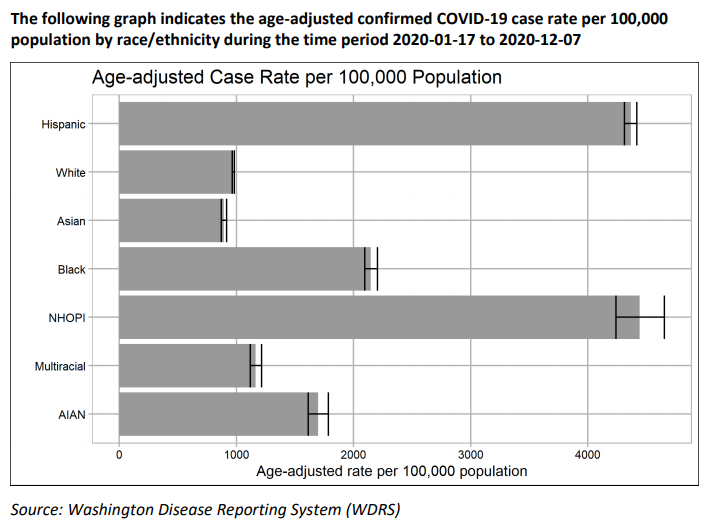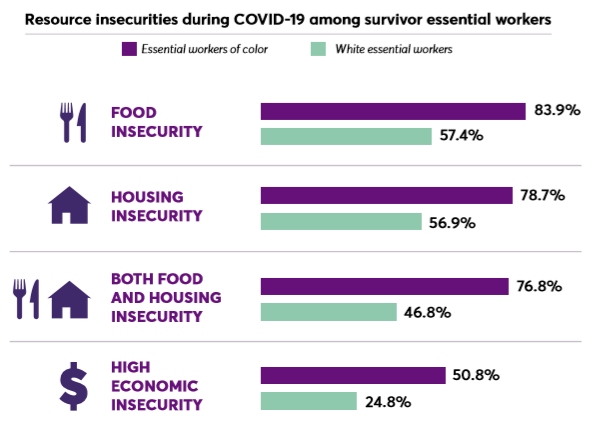As we near the end of 2020, what have we learned about how the COVID-19 pandemic is affecting domestic violence survivors and their households? The pandemic has brought more isolation, stress, and financial instability, leaving survivors with fewer options for safety.
Racial equity matters
The public health crisis has most heavily hit communities of color who were already burdened by disparities in health and access to health care. In Washington State, Pacific Islander, Latino/a, Black, and Indigenous communities have suffered the highest rates of illness, hospitalization, and deaths due to COVID-19.

A study by ‘me too.’ and FreeFrom shines light on the economic impact of the pandemic on women of color survivors of intimate partner violence and sexual violence. The study found that among survivors of color who were essential workers, eight out of ten are facing food and housing insecurity during the COVID-19 pandemic. Economic instability and lack of financial resources were linked to greater safety and economic risks for survivors, including likelihood of returning to an abusive partner, and inability to continue education and training programs.

Money matters
The National Domestic Violence Hotline found that a third of hotline callers in the first half of 2020 experienced economic abuse.
Based on surveys with 1,300 survivors who applied for direct cash grants, FreeFrom documented how the financial impact of the COVID-19 pandemic has limited options for survivors and increased vulnerability to violence. Survivors quantified the financial cost of domestic violence, including money stolen by abusive partners, fraudulent or coerced debt, lost income, and property damage. The economic impact of COVID-19 further endangered survivors who were often trapped with abusive partners without resources to leave and with reduced access to supports like shelter and civil courts.
Connection matters
According to the National Domestic Violence Hotline, survivors reported that abusive partners had used the pandemic as a “scare tactic” to prevent them from seeing family, including their children. Public health restrictions made it more difficult for survivors to reach out for help and connection. For resources to help break isolation and stay connected to friends and family, see WSCADV’s Friends & Family Guide, or these tips for helping a friend experiencing abuse during COVID-19 from the National Network to End Domestic Violence.